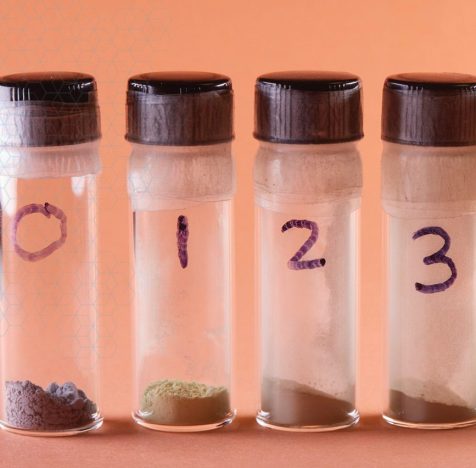Synthesis and Processing

Making Better Materials Better
Synthesis in materials science and engineering is the process of creating a new material by combining different elements or compounds. This can be done through methods such as chemical reactions, or physical methods such as deposition, depositing a thin layer of material onto a surface, and can result in materials with unique properties and characteristics.
Processing refers to the techniques used to manipulate and transform a material into a desired form or shape. This can include melting, casting, extrusion, or machining and can be used to modify the microstructure and properties of the material.
Nanoparticles are being used to develop new materials such as stain-repellent fabrics and scratchproof eyeglasses.
Synthesis and Processing at DMSE
DMSE researchers and engineers are developing new materials, from polymers to metals to semiconducting materials, with properties such as strength and damage resistance. They use chemical vapor deposition, using substances in a vapor phase to generate solid material; the sol-gel process for producing solids from molecules; and self-assembly, in which atoms, molecules, or particles arrange themselves into ordered structures. In materials processing, research teams are developing new, eco-friendly processing techniques for metals, for example, and optimizing additive manufacturing, or 3-D printing, to improve the quality and performance of printed parts.
Related Materials
Related Faculty and Researchers
Key Publications
Uncovering the effects of interface-induced ordering of liquid on crystal growth using machine learning
Employed machine learning methods and simulations to understand the role of the liquid in the solidification process.
A priori control of zeolite phase competition and intergrowth with high-throughput simulations
Discovered a better way of custom-designing zeolites, porous minerals that can trap unwanted molecules from gases or liquids.





























